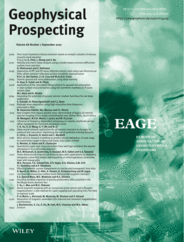-
oa Effects of metallic system components on marine electromagnetic loop data
- Source: Geophysical Prospecting, Volume 68, Issue 7, Aug 2020, p. 2254 - 2270
-
- 17 Dec 2019
- 25 May 2020
- 01 Jul 2020
Abstract
Electromagnetic loop systems rely on the use of non‐conductive materials near the sensor to minimize bias effects superimposed on measured data. For marine sensors, rigidity, compactness and ease of platform handling are essential. Thus, commonly a compromise between rigid, cost‐effective and non‐conductive materials (e.g. stainless steel versus fibreglass composites) needs to be found. For systems dedicated to controlled‐source electromagnetic measurements, a spatial separation between critical system components and sensors may be feasible, whereas compact multi‐sensor platforms, remotely operated vehicles and autonomous unmanned vehicles require the use of electrically conductive components near the sensor. While data analysis and geological interpretations benefit vastly from each added instrument and multidisciplinary approaches, this introduces a systematic and platform‐immanent bias in the measured electromagnetic data. In this scope, we present two comparable case studies targeting loop‐source electromagnetic applications in both time and frequency domains: the time‐domain system trades the compact design for a clear separation of 15 m between an upper fibreglass frame, holding most critical titanium system components, and a lower frame with its coil and receivers. In case of the frequency‐domain profiler, the compact and rigid design is achieved by a circular fibreglass platform, carrying the transmitting and receiving coils, as well as several titanium housings and instruments. In this study, we analyse and quantify the quasi‐static influence of conductive objects on time‐ and frequency‐domain coil systems by applying an analytically and experimentally verified 3D finite element model. Moreover, we present calibration and optimization procedures to minimize bias inherent in the measured data. The numerical experiments do not only show the significance of the bias on the inversion results, but also the efficiency of a system calibration against the analytically calculated response of a known environment. The remaining bias after calibration is a time/frequency‐dependent function of seafloor conductivity, which doubles the commonly estimated noise floor from 1% to 2%, decreasing the sensitivity and resolution of the devices. By optimizing size and position of critical conductive system components (e.g. titanium housings) and/or modifying the transmitter/receiver geometry, we significantly reduce the effect of this residual bias on the inversion results as demonstrated by 3D modelling. These procedures motivate the opportunity to design dedicated, compact, low‐bias platforms and provide a solution for autonomous and remotely steered designs by minimizing their effect on the sensitivity of the controlled‐source electromagnetic sensor.




